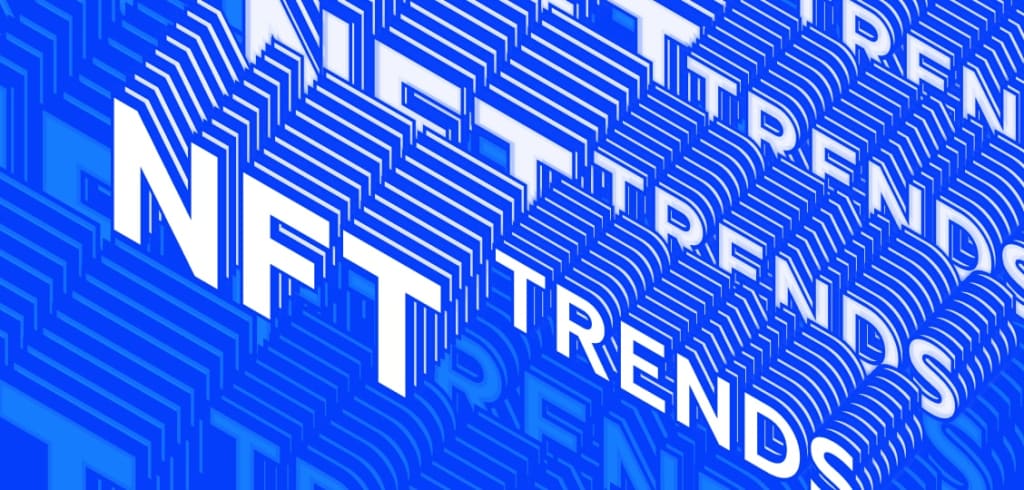
Metaspaces and NFTs have impacted the digital world, as well as industries ranging from art to gaming and even investing. However, these industries have not yet reached their full potential.
Twitter, Meta, and Reddit are all working on NFT or Metaverse projects, investors are making big bets on NFTs, and new companies are popping up.
So, what is the future of the metaverse and NFTs? Which industries will they disrupt next? Which developments will shape the next few years? Let’s take a look at five emerging trends within the metadata and NFT space.by Nft Development Company.
1. Augmented reality
Augmented reality (AR) will lower the barrier to entry into the metaspace, as AR-compatible devices are cheaper to acquire and use. Anyone can use their smartphone to access AR features. One example is Pokemon GO, which recorded over 1.1 million cumulative app downloads in 2020.
Augmented reality technology is currently in its early stages, but it will mature in the next few years. It is a novel approach that will bring value to everyday life. The augmented reality industry worldwide is estimated to expand over the next few years, with a market valuation of as much as $300 billion by 2024.
Some businesses are developing augmented reality (AR) solutions for their customers. For example, Apple is developing an AR/VR headset. The manufacturing schedule was initially pushed back from 2020 to 2022; however, rumor has it that the tech giant has already completed key production tests.
2. Metaverse Land
Interest in augmented reality, virtual reality and metaspace real estate has risen sharply after social media giant Facebook changed its name to Meta and announced plans to invest in the virtual reality space.
Still, parcels of land in the virtual real estate market may seem like an unusual investment. In fact, in many ways, they are remarkably similar to real-world real estate. The digital world could soon become a $1 trillion business, according to recent research from crypto asset management firm Grayscale.
Investors prefer metadata-based real estate for a number of reasons. First, virtual property, like physical property, is in short supply. Owning virtual real estate means you own a unique piece of land in a metadata environment that you can use to create revenue-generating assets such as rentable buildings or virtual spaces with sponsored events.
Second, each piece of Yuanqi property is unique and protected by an unforgeable token (NFT). An NFT is any digital (or physical) deed or proof of ownership.
Your virtual real estate NFT secures your ownership and enables you to sell your property to different owners. It also records all transactions on the property, eliminating the need for title work. It is essentially a digital act from the 21st century.
3. Solana NFTs
NFTs function similarly to blockchain-backed receipts for digital assets such as artwork, profile photos, collectibles, and more. The NFT market generated around $25 billion in transaction volume last year, with Ethereum and its sidechains and layer-2 scaling solutions leading the pack.
However, the Solana NFT ecosystem has grown in popularity over the past year, reaching over $1 billion in total sales. This increase in activity has attracted the attention of leading Ethereum-based NFT platforms.
The most popular NFT marketplace, OpenSea, has added support for the second largest NFT ecosystem outside of Ethereum with the addition of Solana. According to the NFT marketplace, the integration is currently in beta.
Although OpenSea claims to support 165 collections, a search of the marketplace by chain found over 1,175,371 Solana NFTs listed on the platform. Rarible also decided to add Solana support to their platform following this announcement.
NFT markets that dominate the Solana NFT space include Solanart and DigitalEyes, while projects like SolSea and Magic Eden are relative newcomers.
Magic Eden’s total sales over the past month were $41 million. While that’s a fraction of OpenSea’s $2.5 billion in transactions last month, Magic Eden had more than 95,000 active users during that time.
4. An event full of energy
Increased accessibility is an important factor in driving Yuanshen events to happen. First, contrary to popular belief, anyone can participate in virtual reality activities. Modern web browsers are so powerful that, with the right web platform, simply clicking a link on any mobile or laptop device will bring you to the Origin Space.
This accessibility contributes to the democratization of the online environment, ensuring that members of society are not prevented from accessing and accepting the online ecosystem due to technological limitations.
Also, in a virtual environment, there are no restrictions on attendance. Event organizers are not limited by venue capacity or design, allowing for unlimited scalability.
Metaverse’s venues are customizable to meet the specific needs of individual events or conferences, using areas such as breakout rooms and smaller areas if many lectures or presentations need to take place simultaneously. Unlimited capacity can also mean unlimited monetization.
An example is MultiNFT, a Genqi platform that hosts Genqi-based club events through virtual nightclubs on VR platforms such as Decentraland and Somnium Space.
5. From playing to earning games
“Pay for what you do” game subverts the traditional gaming business, where players can earn NFTs by completing predetermined tasks while playing the game.
According to the Blockchain Gaming Alliance, 1.4 million unique active wallets (UAWs) interact with gaming DApps (decentralized applications) every day, accounting for 49% of total industry usage in 2021.
The concept of making money from games has transformed the gaming business, enabling gamers to trade and exchange assets between platforms. Before the introduction of play-to-earn games, in-game assets had no real-world value because creators owned and controlled all in-game assets.
Players will pay the highest cash for the most valuable assets in the game, like weapons and skins, but they can only use them in-game. They cannot move them or exchange them for other assets. When developers change the structure of the game and assets become obsolete, players lose their investment and must acquire new assets to continue playing the game.
Traditional games are just for enjoyment and excitement in this way. The addition of blockchain and cryptocurrencies led to the emergence of NFTs, which in turn led to the emergence of GameFi.
GameFi enables players to increase the value of their assets and earn money while playing their favorite games.
in conclusion
Metaspaces and NFTs are two reasonably new, but influential, areas in the cryptocurrency space. As the market matures, we may see more technologies, integrations and products emerge in these industries.
About the Creator
Boopathi
Digital Marketer , SEO Analyst






Comments
There are no comments for this story
Be the first to respond and start the conversation.